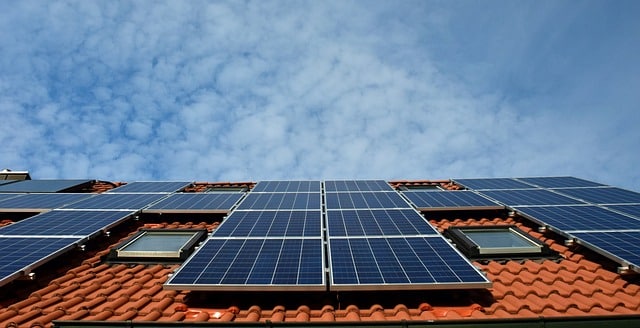Sustainable home design elements are a modern and growing trend that can leave a positive imprint on the environment and enhance the aesthetic beauty of your home.
Incorporating sustainable design elements into your home can result in reducing energy consumption, conserving local resources, and improving indoor air quality for you and your family. Elements such as solar panels, water-efficient fixtures, green rooftops, and insulated walls can help reduce your home’s ecological footprint.
At the same time, relatively simple modifications like replacing carpet with hardwood or bamboo flooring or adding high-efficiency windows and skylights can increase the energy efficiency of your home. Embracing sustainable design doesn’t have to mean sacrificing style; there are many options available that combine functionality with thoughtful aesthetics.
You can also transform your space with unique and intricate mosaic tile designs, recycled glass countertops, or repurposed furniture. Adding solar ledges and energy-efficient appliances are practical choices that can bring warmth to your space while helping you conserve energy.
By creating a home with sustainable design elements, you will not only be preserving the environment but also improving your quality of life through improved comfort and efficiency. Sustainable design is an investment that will not only help you save money on energy costs but also leave an enduring impression for generations to come.
Below are some tips to help you get started with incorporating sustainable design elements into your home:
Read Also: 8 Best Pink Colour Combination for Wall
Assess the Environmental Impact of All Materials Used in Your Home’s Construction or Remodel
Assessing the environmental impact of all materials used in home construction and remodeling is an important step when considering a building or remodeling project. At a minimum, consider the construction material’s source, its emissions during production and transportation, its recyclability or other end-of-life disposal options, and any energy savings or features built into the material.
Consider both immediate and long-term impacts on air quality, soil health, and water sources, both local and global. Pay attention to how well it fits within your local regulatory framework for safe environmental practices. Taking an informed approach to selecting materials for home construction or remodeling will ensure that thoughtful decisions are made that minimize negative impacts on the environment.
Utilize Natural Light as Much as Possible by Installing Larger Windows, Skylights, and Led Lighting Fixtures
Illuminating a home or office space naturally with larger windows, skylights, and LED lighting fixtures has numerous advantages. Natural sunlight is one of the best mood boosters and enhances productivity in workspace environments while providing crisp illumination and energy savings.
Installing larger windows can allow more natural light to enter the space, which both energizes you during the day and can give you peaceful evenings with gentle pastels dancing on the walls from the sunset’s remaining warmth.
Skylights provide extra sunshine that can even reach dark corridors or tight spaces where other forms of light may struggle to reach. LED lamps are efficient options for daytime accentuating that don’t require an excessive amount of electricity but can turn an ordinary room into an elevated living space.
Utilizing all available natural light sources is not only cost-effective but also helps promote physical health as well as mental well-being.
Read Also: Top Shade Structure Ideas For Your Home
Choose Energy Efficient Appliances for Your Home
Many homeowners are now opting to choose energy-efficient appliances in their homes. Not only do they help the environment by using less electricity and resources, but they can also lower the financial burden of your electricity bills. With technologies such as Energy Star ratings and other savvy features, manufacturers are able to manufacture products that can use less energy than ever before.
These appliances prove to be a smart choice for both the environment and your pocketbook in the long run. When selecting appliances for your home, it pays to consider energy efficiency options and look for features such as LED lighting and advanced features so you can enjoy money-saving benefits.
Incorporating sustainable design features into your home can help reduce its environmental impact while saving you money in the long run. Taking informed steps towards selecting materials and utilizing natural light sources, as well as choosing energy-efficient appliances, are all great ways to start making your home more sustainable and comfortable.
An investment today in eco-friendly products will ensure a brighter tomorrow for generations to come.
Bottom Line
Investing in sustainable design features can help reduce the environmental impact of your home while saving you money in the long run. Choose materials with a low environmental impact, utilize natural light sources, and choose energy-efficient appliances to get started.
An investment today will ensure a brighter tomorrow for generations to come. Therefore, it is important to make thoughtful decisions when selecting items for your home in order to minimize its environmental impact.
